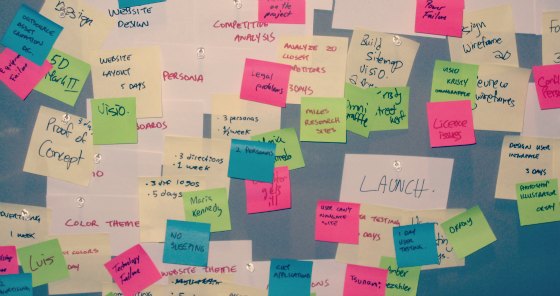
In this post…
Task management software provides a great foundation for managing projects, and many creative agencies may find it to be all they need to successfully deliver projects on time and under budget. In my experience, however, online task management software is more effective when coupled with project management features.
Managing a project successfully using only tasks depends more on the size of the project and the teams ability to self organize, than it will your adopting the latest and greatest task management software. Some pros and cons to consider…
The benefits of a task-only approach
Some projects are small, simple, and straightforward enough they don’t require more than a typical task-based workflow. These types of projects can be broken down into a handful of tasks to be completed by one or two people. You will typically come across these projects in a freelancing scenario, where the project is small enough for one person to both manage and complete the work.
Repetitive, straightforward projects are also good candidates for a task-based management process. These are sometimes referred to by agencies as “Bread and Butter” projects. These types of projects aren’t glamorous, they don’t stretch our creativity, but they do pay the bills. These projects are familiar, making it easy for the team to manage the process and stay organized with a simple task management app.
Why task management alone may not be enough
Most projects your agency encounters will require more project management features than a standalone task management app can provide. Features that will help prevent scope creep, prioritize one project over another, analyze current projects, estimate new projects, and get paid for the projects you’ve already completed.
In other words, the ability to make smart business decisions plays an important role in project management. Let’s take scope creep, for example. If our project management software includes time tracking, we can run a report to see the number and value of hours we’ve put into a project — right up until that moment the client asks us to change something.
Instead of responding with a resounding “no” or the dreaded change request, the project manager might be able to accommodate the request because another task came in way under budget. Or they may still say “no” and resort to the change request because the project is already over budget. Either way, they made a decision based on where the project stood at that time, not based on where they thought it would end up when the contracts were signed.

A project is more than the sum of its tasks
Managing a project using tasks alone is a myopic methodology. Sure, it gets the project done. But it doesn’t take into account the necessity of historical data for making better project management decisions in the future. If you can discipline your team to track their time and document their work on each task, you will have a wealth of data that can be used to estimate projects more accurately.
If you can track project payments and expenses, you can prioritize projects for those clients who pay on time. If you can generate detailed reports you can quickly respond to client questions regarding how and when their money spent. Putting in a little more effort while working on tasks translates to a lot less effort when making overarching project management decisions in the not so distant future.
Photo credit: VFS Digital Design, mcginnly